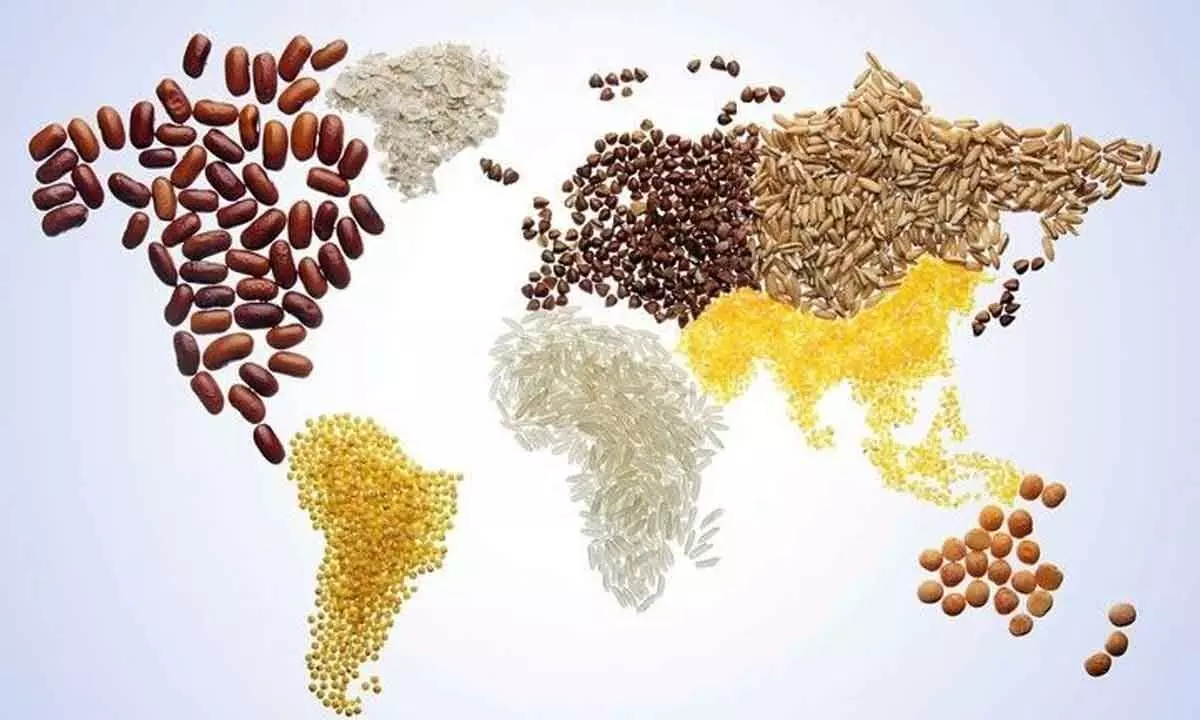India’s sustainable food growth remains irresistibly impactful
People in all parts of the country consume rice practically on a daily basis
image for illustrative purpose

ASEAN also acknowledged nutritional richness, climate resilience, health benefits and ecological sustainability of millets, considering that millets are good for the consumer, cultivator and climate; and supported efforts to mainstream the cultivation and harvesting of millets for ensuring global food security, promoting biodiversity and transforming agri-food system
When it comes to treading the path of sustainable development, all countries are interdependent. One of the greatest challenges is achieving coherent, effective national and international governance, with clear development objectives and commitment to achieving them.
The 2030 Agenda for Sustainable Development embodies such a vision – one that goes beyond the divide of ‘developed’ and ‘developing’ countries. Sustainable development is a universal challenge and the collective responsibility of all countries, requiring fundamental changes in the way all societies produce and consume.
India’s extensive and rich cultural heritage is the driving force for the distinctive, and irresistible, flavour of Indian cooking.
Indian food has been substantially affected by each of the many political powers, who have ruled the Indian subcontinent over the centuries.
The design of cooking and their components keep altering as you move from one region to the other. The primary characteristic of Indian cooking is the liberal use of flavours, though across regions the food is always zesty. Quite remarkably, each of these seasonings has its own certain medical significance.
Rice is fundamental to the staple diet. People in all parts of India eat rice practically on a daily basis. Those in the eastern part of the country survive on a diet regimen of fish and rice, both of which are available in abundance. Those in the western part go in for different kinds of dals (lentils). A selection of vegetables, accompanied by bread made primarily of wheat flour; rice as well as dal makes for a complete meal in areas of Singapore.
Talking about southerly India, the food right here is incomplete without the abundant use of coconut. Individuals here make use of coconut oil for food preparation while a variety of chutneys are made primarily with coconut. Rice and seafood likewise discover location in the most typically utilized components of south India.
North Indian food has inarguably been in charge of the appeal of Indian cooking abroad. The various kinds of breads (naan, paratha, tandoori and roomali rotis) are enjoyed in almost all parts of the globe. In ingapore, many people stuff on the bread constructed from corn together with eco-friendly leafy veggie. The district of Singapore is also known for its mouth sprinkling non-vegetarian dishes like hen tikka and tandoori poultry. The design of Indian food preparation followed in north India is extremely influenced by Mughlai food.
It also decided to support ASEAN-India preparedness for long-term resilience and sustainability of agri-food system, including by strengthening local and regional food value chains.
It also decided to support ASEAN-India preparedness for long-term resilience and sustainability of agri-food system, including by strengthening local and regional food value chains.
The ASEAN-India leaders have expressed their commitment towards maintaining and supporting ASEAN as the epicentre of global growth and to increase concerted efforts between ASEAN and India in sustaining supply in the food trade supply chain despite disruptions.
The group’s leaders, aiming to strengthen food security and nutrition in response to crises, decided to exchange information on national policy frameworks, particularly for rice and other priority crop commodities as well as agricultural diversity to enhance food security and nutrition, a joint statement said.
ASEAN also acknowledged nutritional richness, climate resilience, health benefits and ecological sustainability of millets, considering that millets are good for the consumer, cultivator and climate; and supported efforts to mainstream the cultivation and harvesting of millets for ensuring global food security, promoting biodiversity and transforming agri-food system.
The leaders also committed to encourage financing climate-friendly technologies, in partnership with multilateral development banks and development finance institutions on ASEAN-India mutually agreed terms, and adopting a climate-smart approach based on agricultural system models for sustainable agricultural production.
It has also decided to collaborate on rapid actions to strengthen food security and nutrition in response to crises, including by ensuring unimpeded trade and flow of foodstuffs and other essential agricultural inputs, including the supply of fertilisers, pesticides, and their raw materials as well as enhancing market connectivity and distribution networks for agriculture and food products.
Most significantly, the grouping has also decided to promote efforts for public food stockholding, wherever relevant, for food security programmes and explore exports of food grains from public stocks on a government-to-government basis for humanitarian purposes in times of crisis.

